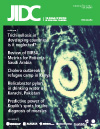Sexually transmitted infections in HIV-infected patients in Kabale Hospital, Uganda
DOI:
https://doi.org/10.3855/jidc.1754Keywords:
sexually transmitted infections, HIV infection, antiretroviral therapy, UgandaAbstract
Introduction: Acquisition of sexually transmitted infections (STIs) is an epidemiological marker of high-risk sexual behavior in HIV-infected patients. We assessed the prevalence of STIs among patients attending an HIV care and support centre.
Methodology: From January to August 2009, we assessed socio-demographic variables, sexuality, disclosure of sero-status and STI treatment for 400 patients attending the HIV care and support centre. Characteristics of those who had been treated and those who had never been treated for STIs were compared to identify factors independently associated with STIs.
Results: Of the 400 respondents, 25.3% were male, 47.3% were aged 25-34 years, over 85% were currently married or had ever been married, and 62% had primary level of education or less. Though 82.5% were on antiretroviral drugs, only 53.1% disclosed their sero-status to their regular partners and only 41.9% knew the sero-status of their regular partners. Furthermore, 151 (37.7%) had been treated for STIs. The STIs were gonorrhoea (15; 9.7%), chlamydia (11; 7.1%), Trichomonas vaginalis (5; 3.3%), syphilis (99; 64.3%), and mixed infections (21; 13.6%). Factors associated with STI treatment on univariable analysis were age at sexual debut, whether the respondent had had sex in the previous six months, frequency of sexual intercourse, having changed sexual partners, number of sexual partners, and age when the respondent had a first child.
Conclusion: Unprotected sexual intercourse and STIs are common among patients seeking HIV care in Uganda. Only the age of sexual debut (odds ratio0.82, confidence limits 0.71, 0.94) was independently (though inversely) associated with STIs.
Downloads
Published
How to Cite
Issue
Section
License
Authors who publish with this journal agree to the following terms:
- Authors retain copyright and grant the journal right of first publication with the work simultaneously licensed under a Creative Commons Attribution License that allows others to share the work with an acknowledgement of the work's authorship and initial publication in this journal.
- Authors are able to enter into separate, additional contractual arrangements for the non-exclusive distribution of the journal's published version of the work (e.g., post it to an institutional repository or publish it in a book), with an acknowledgement of its initial publication in this journal.
- Authors are permitted and encouraged to post their work online (e.g., in institutional repositories or on their website) prior to and during the submission process, as it can lead to productive exchanges, as well as earlier and greater citation of published work (See The Effect of Open Access).








